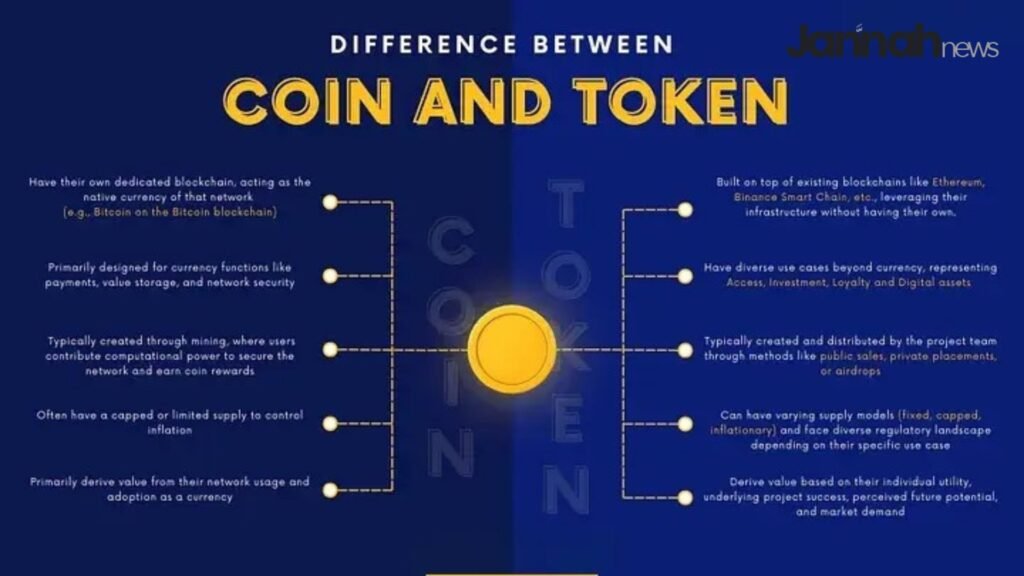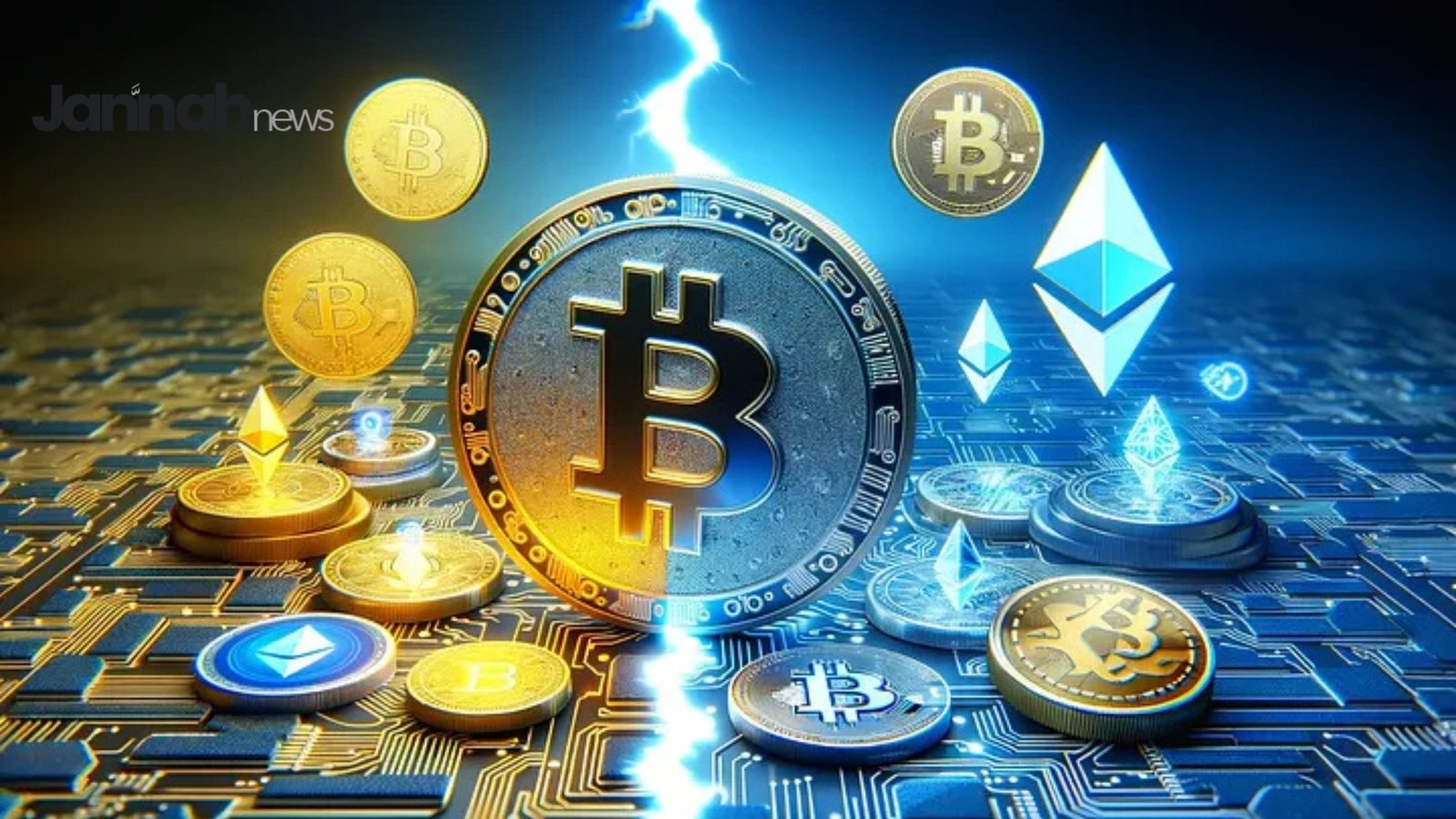It is essential to comprehend the Bitcoin Wallet Comparison of Tokens and Coins in the realm of cryptocurrencies. It’s critical to assess the top wallets for handling Bitcoin and other tokens, as the cryptocurrency continues to rule the digital currency market in 2024. To assist you in managing your digital assets, this article analyzes Bitcoin wallets, delves into the subtleties of tokens and currencies, and examines their applicability. Explore the ultimate Bitcoin Wallet Comparison of Tokens and Coins in 2024. Discover secure, versatile wallets for managing cryptocurrencies effectively.
What Is a Crypto Coin?
Cryptocurrency coins are like special digital money that works on their special networks. Some examples of coins are Bitcoin, Litecoin, and Dash. You can use these coins to buy things online, invest, or save them up just like regular money. People get these coins through a process called mining or sometimes they’re made in a certain way. The value of these coins depends on things like how rare they are, what you can use them for, and how much people want them.
What Are Tokens?
Cryptocurrency tokens are like special digital items that live on certain blockchain platforms, like Ethereum. These tokens can stand for all sorts of things within apps and contracts that are part of the blockchain. For example, they might represent real stuff like gold or houses, or they might give you special rights to use something within a particular app. Tokens are made using special contracts on the blockchain, and their value usually depends on how well the projects they’re connected to are doing.
Understanding Blockchain Application Tokens
Unlike native currency, tokens are blockchain-based digital assets. Ethereum, Solana, and BNB Chain smart contracts issue tokens instead of blockchains. Decentralized apps can run on tokenized parent blockchains. UNI coins power Uni swap’s decentralized exchange, while BAT enables Brave browser users to tip content creators. Each is Ethereum-based. Blockchain tokens enable app involvement using the network’s architecture. This streamlines new solution launches by eliminating blockchain development.
Blockchain tokens facilitate user interactions and decentralized networks. These coins use Ethereum blockchain networks and ERC-20 or BEP-20 specifications, unlike Bitcoin. Use application tokens to access blockchain ecosystem features. Decentralized Oracle network governance decisions are made using Chain-link (LINK) or Uni swap (UNI) currency. Decentralized networks use these coins for decision-making, staking, and service access. Developers create app tokens for specialized uses.
DeFi token holders participate in liquidity pools or earn interest. NFT marketplaces let gamers sell tokens or acquire in-game stuff. Programmable tokens let smart contracts automate transactions for efficiency and security. Blockchain application tokens simplify interactions with cutting-edge decentralized applications. As blockchain ecosystems mature, they provide developers and users with more alternatives. By leveraging application tokens, blockchain technology ensures decentralization, fosters innovation and enhances accessibility.
Key Functional Differences

The major difference is that coins have dedicated blockchains for base network services and tokens enable applications on other chains. Coins facilitate value exchange and storage in protocol-governed ecosystems. Tokens are scriptable app assets and tools. Coin scarcity models use consensus processes like mining to distribute fresh supply. Token supply mechanics depend on smart contract parameters.
Blockchain currencies and tokens serve distinct purposes in the cryptocurrency ecosystem. Blockchain-based coins like Ethereum and Bitcoin are digital money. Value storage, transactions, and payments are the main uses of coins. Conversely, tokens represent platform functionality built on an existing blockchain. Developers create tokens for decentralized governance, staking, and service access. Consumers utilize LINK tokens for Oracle networks and AAVE for DeFi financing. These functional differences illustrate that tokens enable blockchain ecosystems while coins drive currencies.
Wallet Handling Considerations
With these distinctions in mind, Bitcoin wallet users should:
- Categorize holdings appropriately as either standalone coins or application tokens based on their origin and purpose.
- Recognize tokens depend on their parent network’s continued soundness and security for their value.
- Treat tokens differently than speculative coins when considering valuations or real-world utility.
- Evaluate token supply schedules separately from typical coin minting and distribution models.
- Making sense of the token vs coin differences enhances how users analyze assets for smart portfolio management.
Also Read: How Crypto Exchange Technology Drives the Digital Economy
In Summary
Knowing the differences between native currency and application tokens is important as decentralized applications continue to develop. Tokens, in addition to increasing usefulness on top of base-layer blockchain networks, differ from coins. Which primarily focuses on storing value and enabling those networks. Moreover, by leveraging both coins and tokens through their Bitcoin wallet. Users can access the entire range of cryptocurrency advancements. Keeping up with Bitcoin news is crucial as it changes often.
From decentralized finance (DeFi) to non-fungible tokens (NFTs), currencies and tokens are employed in novel ways. These new ideas are changing our views on money and technology. Even, if cryptocurrencies seem complicated at first, knowing coins and tokens is crucial. Gaining a solid understanding of these concepts can help you navigate this digital transformation, whether you want to invest, produce, or learn.









